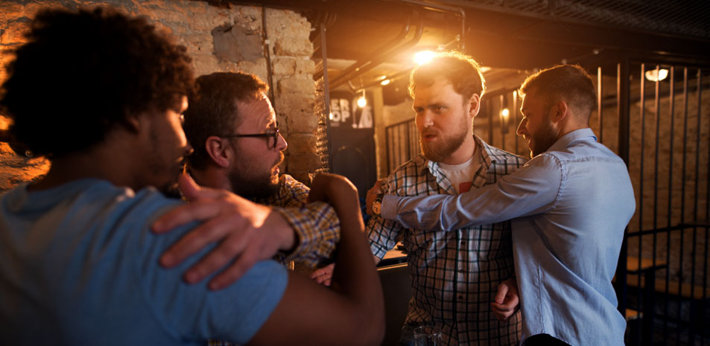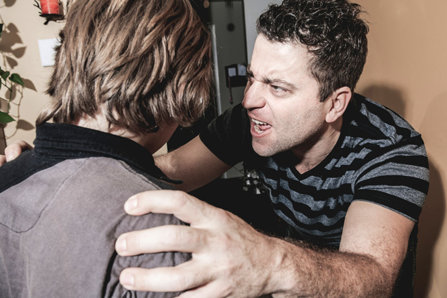Alcohol and Its Ties to Injuries, Suicide, and Violence

We all want an enjoyable world to live in, one that’s safe for our kids… One in which we feel free to choose our futures, maybe enjoy a little art, music, sports or nature. A world in which we have loyal friends and loving family. You might not realize that for far too many people, alcohol is the thing that ruins any possibility of a pleasant, enjoyable future.
There’s so many reasons that alcohol is an unrecognized demon. First among these reasons is that it is legal. It’s available just about everywhere. In an urban area, it might be possible to find an outlet for alcohol on every block or at least in every quarter-mile.
Second, the vast majority of Americans are descended from immigrants from countries where alcohol was also legal, so the concept of accompanying dinner, outings or life in general with alcohol has been a constant in the American-European culture for many centuries. It’s almost in the genes, you might say.
A third reason is that alcohol takes its toll so very slowly. No one takes one drink and immediately turns into an alcoholic. Cirrhosis of the liver takes many years to develop, as do the other serious and even deadly health conditions linked to alcohol consumption. When a young adult downs a six-pack in a couple of hours, he’s not going to keel over on the spot. So it can be hard to conceive of alcohol as a killer.
Fourth, alcohol seems to be inextricably woven into American social patterns. Friends come over for a drink before going out, there’s a tailgate party with booze before a football game, friends take a person celebrating their 21st birthday out to get smashed, any college party should definitely be accompanied by alcohol, weddings and New Year’s Eve are toasted with champagne and so on… at length.
What if… You could take a person for whom alcohol was a completely acceptable or even necessary part of life and educate them on the wreckage that can result from drinking?
Would they walk away with an unchanged attitude?
Might they decide to moderate their own drinking and look out for their friends better?
Let’s take a look at some of the information that might cause them to change their minds about the acceptability of alcohol.
Suicide
In 2017, the Linkin Park musician Chester Bennington was found dead of suicide. His wife reported to authorities that he had previously contemplated suicide after drinking. This time, after just a couple of beers and with his family away on vacation, he succeeded in killing himself.
A 2013 study took a look at the relationship between alcohol use and suicide among college students. Each year, 1,100 college students commit suicide and 18% of undergraduates admit that they have thought about it. Because college students routinely consume more alcohol than non-student individuals of the same age, they are more likely to place themselves in upsetting or negative situations as a result of that drinking. Negative life situations can lead a person to consider suicide so it becomes a vicious cycle of drinking, being upset, drinking to blot out the upset and incurring more negative effects. The study concludes that “college students who consume alcohol more frequently and at higher quantities are at an increased risk for suicide.”
A report from the U.S. Department of Health and Human Services notes that when the legal drinking age was lowered from 21 to 18, the number of youth suicide rates went up.
Assaults and Homicides
The very sad thing about assaults and homicides related to alcohol use is that so many of them would never have happened without alcohol being present. A review of statistics on those arrested for assault crimes found that many of these crimes were associated with alcohol use.

- As much as 86% of those arrested for homicide had been drinking
- 37% of those arrested for assault had been drinking
- 60% of those who had carried out a sexual assault had been drinking
- As much as 57% of men involved in domestic violence had been drinking
Another analysis found that 48% of those committing homicide were drinking right before the murder and 37% were intoxicated during the murder.
Studies have found that cities and neighborhoods with more alcohol-sales outlets have higher rates of violent crime. And each year, there are more than 7,700 alcohol-related homicides and more than 1,200 of these occur to young adults under 21 years of age. You can learn more from this fact sheet from Johns Hopkins Bloomberg School of Public Health.
Injuries
Some people become injured because of alcohol-related assaults and others are injured because of accidents that would not have occurred if the individual had not been drunk. Injuries often happen because an impaired person could not look out for himself (or herself) while intoxicated. In this category, the list is far too long.

In 2016, an Onondaga Community College freshman named Alex Hendry left an off-campus party and never made it home. His body was found two days later, after nighttime temperatures of -20 degrees. His death was attributed to alcohol intoxication and hypothermia.
Paul McGuinness was only 19 when he went out drinking in Washington, D.C. with his cousin. He fell into a stairwell in the back of the bar and was not found for two days.
Anthony Urena, 23, was intoxicated when he left a New York club at 5 a.m. His body was found in the Hudson River seven weeks later. Just a block away from the club is an area where one can access the river and authorities thought he might have gotten lost and fallen into the river in this area.
When a person is drinking, he (or she) is not thinking about the possibilities of assault, violence, death or suicide. Maybe he wants to relax and forget about life for a while or maybe he thinks he needs to drink like his buddies do so they will like him.
It’s up to the family and good friends who see that drinking is harming a person’s life to step in. The outcomes we’ve just been looking at are far too serious to let it go. And if a person can’t control their own drinking, if they have lost the ability to cut back or stop drinking, it’s time to help them find the right recovery program. As we’ve just seen, taking this action could save their life.


 ®
®